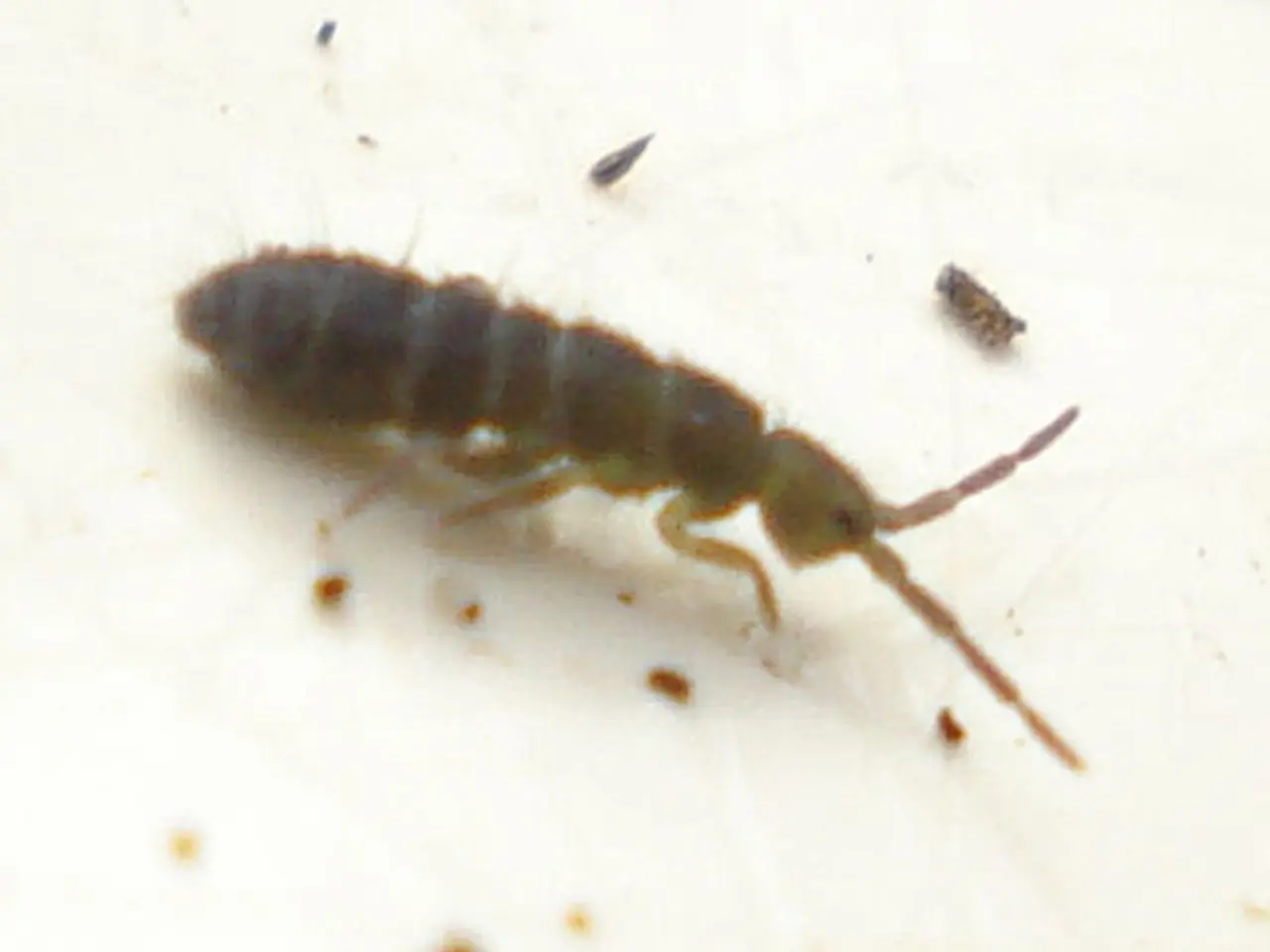Enigma of Miniature White Leaps in Earthy Plant Dirt
In the world of gardening, there are several unseen enemies that can wreak havoc on your plants. Among them are fungus gnats, root aphids, and root mealybugs. These tiny creatures, while often overlooked, can cause significant damage to your plants, leading to stunted growth, leaf discoloration, and even crop losses.
Fungus Gnats
Fungus gnats are small flies that infest moist potting soil and other container media. Their larvae primarily feed on fungi and organic matter in the soil but also chew on roots. These pests are known to spread infestations easily, making them a common problem for indoor gardeners. To control fungus gnats, it's essential to reduce excess moisture and organic debris in the soil, allow the soil to dry out between waterings, and use sticky traps. In severe cases, applying insecticides to the soil's surface might be necessary.
Root Aphids
Root aphids are tiny, white, jumping insects that live in the soil and feed on plant roots. Their presence can lead to a host of problems, including stunted growth, leaf discoloration and wilting, vulnerability to diseases, reduced fruit and flower quality, and spreading of infestation. Early detection is crucial when dealing with root aphids, and monitoring root zones, inspecting roots, and checking for signs of infestation are important steps.
Root Mealybugs
Root mealybugs are small, white insects that secrete a white, cottony substance that covers their bodies and the surrounding soil. This substance helps them retain moisture and shields them from external factors. Root mealybugs tend to stay localized to the specific pot they are infesting, causing prolonged and concentrated damage to a single plant. Female root mealybugs can lay up to fifteen eggs per day and a total of two hundred eggs during their lifespan. To prevent infestations, it's crucial to inspect plants regularly, especially when bringing new plants into your home, and change the top layer of soil for new plants.
While these pests can be detrimental to your plants, it's important to note that not all small, white insects in the soil are harmful. For instance, springtails are beneficial creatures that contribute to soil health and plant growth. They improve soil health through organic matter decomposition, nutrient recycling, weed suppression, and enhancing soil structure.
In conclusion, being aware of these soil pests and taking preventive measures can help maintain a healthy garden. Regular inspections, proper soil management, and prompt treatment when necessary are key to keeping these pests at bay and ensuring a thriving garden.
- The science behind environmental-science has helped us understand that the tiny, often overlooked creatures like fungus gnats, root aphids, and root mealybugs in our soil can significantly impact the health-and-wellness of our plants.
- As a home-and-garden enthusiast, it's essential to be familiar with various medical-conditions that can affect your plants, such as stunted growth, leaf discoloration, and even crop losses, which can be caused by soil pests like fungus gnats, root aphids, and root mealybugs.
- In the realm of lifestyle, gardening involves more than just tending to plants; it also requires understanding various aspects of environmental-science, such as soil health, and making informed decisions to keep pests at bay and ensure a thriving garden.
- In the fashion-and-beauty and food-and-drink realm, having a healthy garden can contribute to a healthier lifestyle by providing fresh produce for meals and maintaining a beautiful outdoor space for enjoyment and relaxation.




